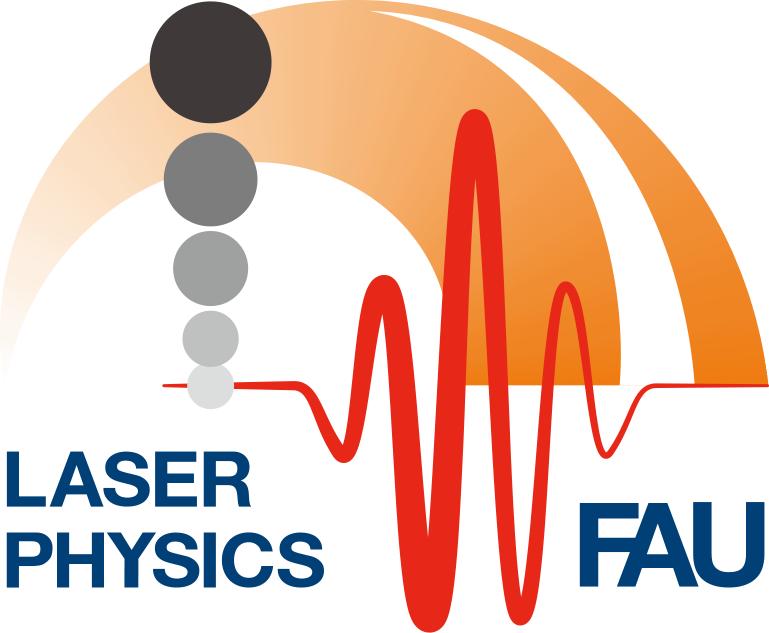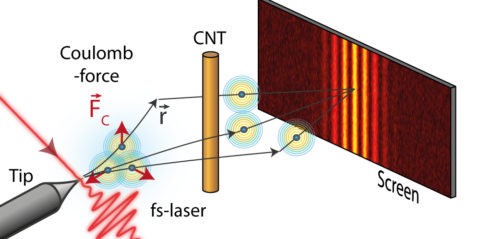Coulomb interactions in pulsed electron beams – published in ACS Photonics
Two negatively charged particles repel each other when they get too close. What is old hat in and of itself becomes highly relevant, however, when one looks at sources for ultrashort electron pulses. The best electron sources owe their excellent spatial beam properties to an emission area only nanometers in size. If the electron emission is additionally controlled by femtosecond-short laser pulses, several electrons are emitted within a few femtoseconds and nanometers, depending on the intensity of the light – they therefore come extremely close to each other. In our latest publication, we quantitatively measured the dependence of the spatial coherence of these electron pulses on the average number of emitted electrons per pulse. We were able to show that the spatial coherence is already affected by Coulomb repulsions between the electrons at an average of only one electron per pulse due to the emission statistics. For even higher currents, the spatial coherence then decreases exponentially. This quantitative understanding is of great importance to the field of temporally resolved electron microscopy, where one is just trying to achieve the highest possible pulsed current for better contrast. The paper is published by ACS Photonics and can also be viewed for free here.

